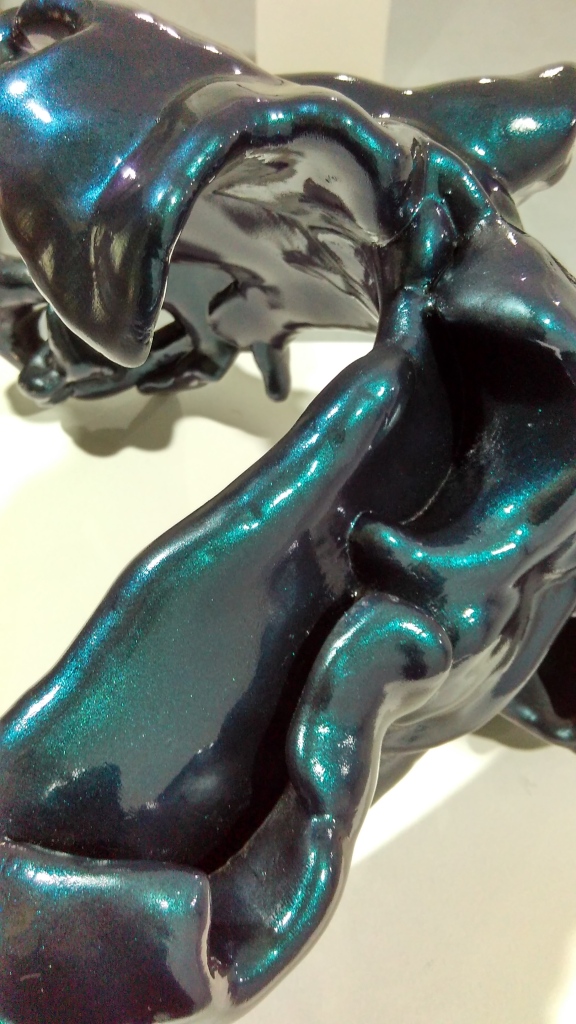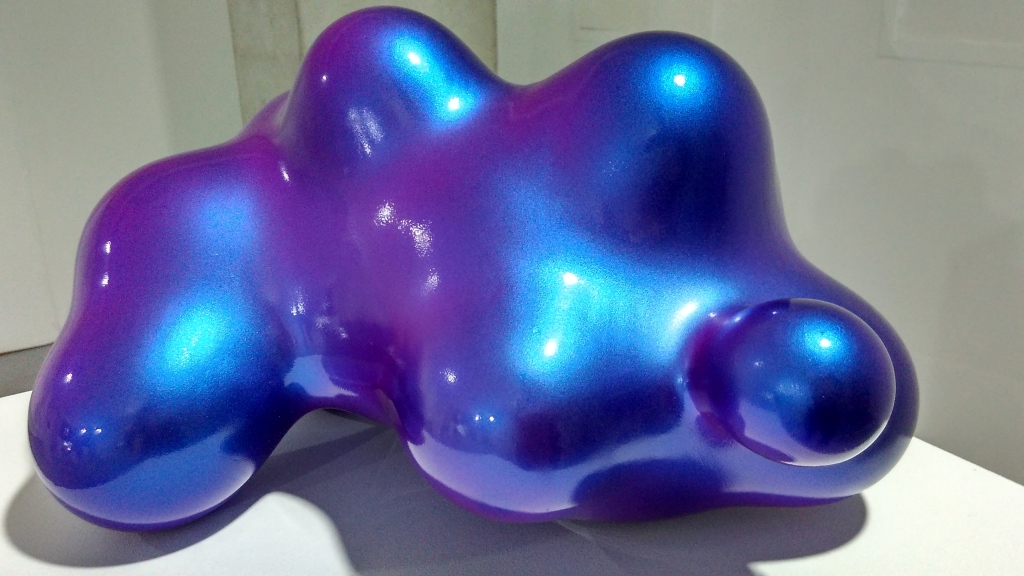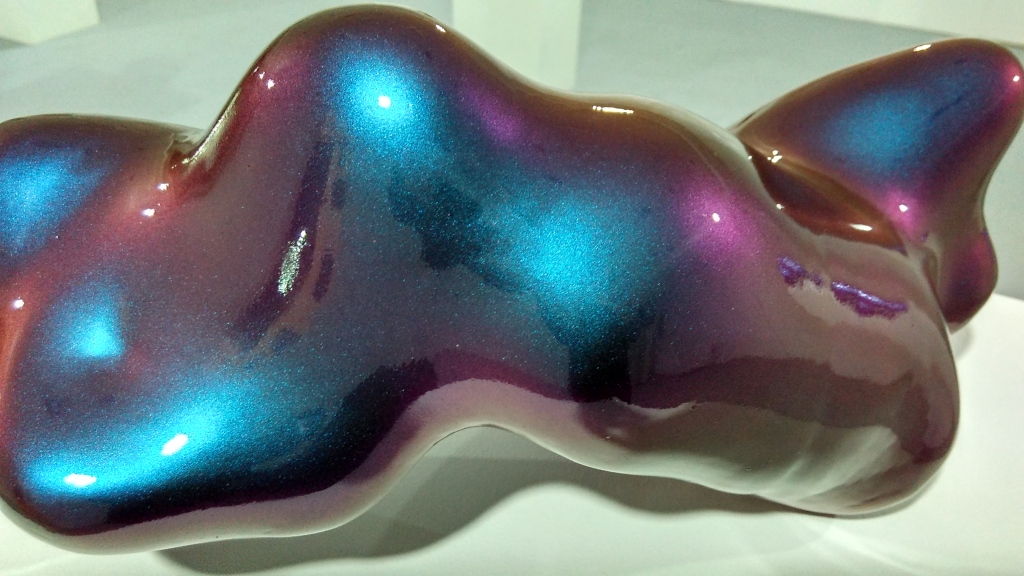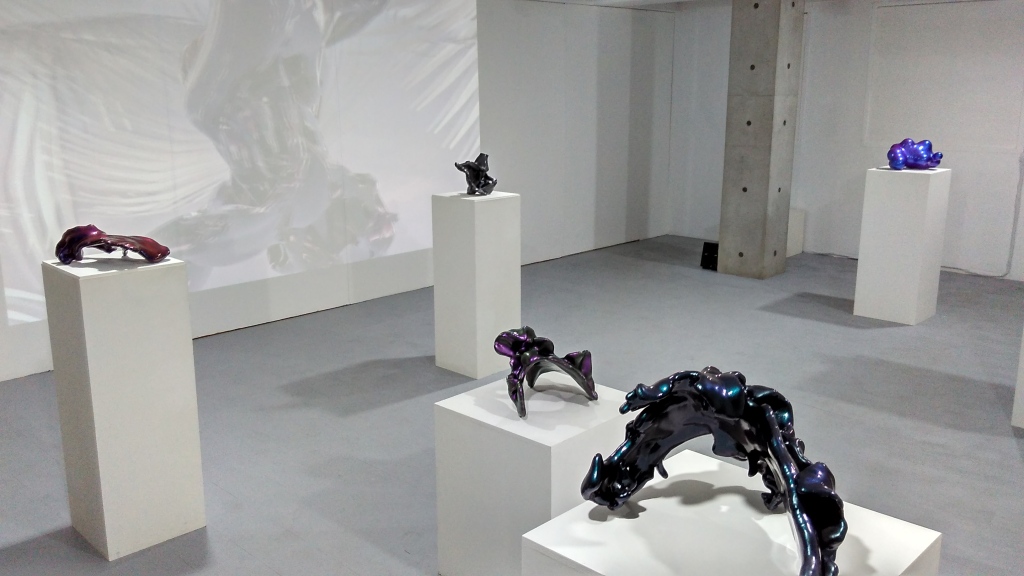Seoul, October 17 – 24, 2015, http://unofficialpreview.com
Based on their on-line presence and digital artworks, Pussykrew create interesting stuff. It is fashionable stuff, but still, looks good. Their preference seems to be towards 3D scanning and modelling, not much about animation or rigging.
The medium-sized 3D printed objects on display have all been covered in a similar violet-green metallic paint, a color scheme taken over from their 3D animations. Placed on the white pedestals in the brightly lit room, the objects looked small and lonely. It was a clash of 19th century display techniques (medium-sized bronze sculptures on pedestals) and 21st century production technology (3D printing). The bleak projection of one of Pussykrew’s videos, hardly visible in the bright galley lightning only enhanced the feeling of two not much compatible worlds colliding: The digital world, where it is light that is being sculpted (on the screen) and the real world, where material is being sculpted. While in the former, light is the very material, in the latter, light is a precondition allowing work with the physical material to take place.
If this was an “Unofficial Preview” in someone’s living room, than fine, it was nice to see some of Pussykrew’s works in physical form in Seoul, far away from their Berlin base. However if this was a “Gallery” then the installation was very problematic, ignoring many of the basics of media art presentation, starting from the fact that a video cannot be illuminated by pointing a light at it. But let’s get over that and look at the stuff on display.
The objects themselves produced ambiguous feelings, which was sometimes good and sometimes bad. It is tempting to simply hit print, and create a physical manifestation of something from the depths of the digital. But why? Some of the objects could have easily been made using traditional techniques and the process of 3D scanning and printing was nothing more than a substitute for the lack of physical sculpting skills. But for some objects, it made sense.
The metaball-sculptures were interesting, referring to minimal sculpture, similar to the metal plates placed on the floor by Carl Andre. (For those who don’t know, metaball is one of the basic shape effect primitives in 3D modelling software, which is able to produce an infinite number of shapes by basic parameter variations, a bit like Sol Lewitt’s cube drawings and sculptures). The metaballs were not interesting as some wonderfully well-made art object, it probably took just a couple of minutes to model them, but they were interesting in the way they referenced the tools that were used to make them. They were not hiding their origin in the 3D modelling software, similarly as minimal sculptures did put on display the materials they were made of, as one of the main meaning components. In the same way as there was only a small step between Donald Judd’s sculptures and Ikea shelves, there is only a small step between Pussykrew’s Metaballs and a metallic paint covered car spoiler or motorcycle hood. It is this niche between an artwork and a product that is worth probing and contemplating. If done well, it can tell us more about both of the realms that intersect here, without slipping into one or the other.


